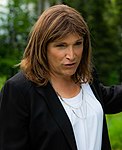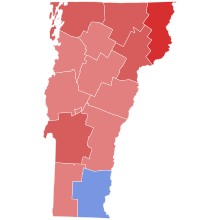| |||||||||||||||||
| Turnout | 55.6% | ||||||||||||||||
|---|---|---|---|---|---|---|---|---|---|---|---|---|---|---|---|---|---|
| |||||||||||||||||
Scott: 40–50% 50–60% 60–70% 70–80% 80–90% Hallquist: 40–50% 50–60% 60–70% 70–80% | |||||||||||||||||
| |||||||||||||||||
| Elections in Vermont |
|---|
 |
The 2018 Vermont gubernatorial election took place on November 6, 2018, to elect the governor of Vermont, concurrently with the election of Vermont's Class I U.S. Senate seat, as well as other elections to the United States Senate in other states and elections to the United States House of Representatives and various state and local elections. Incumbent Republican governor Phil Scott, who was first elected in 2016, was re-elected to a second term in office.[1] Hallquist's 40.3% was also the worst performance for a Democratic Party candidate since 2008. This was one of eight Republican-held governorships up for election in a state that Hillary Clinton won in the 2016 presidential election.
Despite initial expectations of a potentially close race due to national blue wave, Scott easily won reelection in what became a difficult year for Republicans, winning by 15 percentage points. As of 2022, this election marked the last time a Democratic candidate won a county in a gubernatorial election in Vermont.
- ^ Hallenbeck, Terri; Heintz, Paul (November 9, 2016). "Republican Phil Scott Elected Governor of Vermont". Seven Days. Retrieved November 27, 2016.



